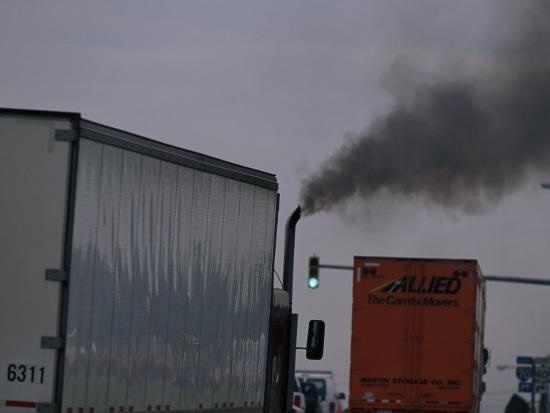
There have been changes made by the Ministry of the Environment, Conservation and Parks (MECP), which is increasing its enforcement powers for truckers who have tampered with their emission systems. This updated legislation allows plates from any Canadian province to be seized when driving on Ontario roads. Previously officers could only pull plates and permits from Ontario-plated vehicles.
Other amendments allow for heavier fines and a move is underway to increase enforcement measures against providers and installers of delete kits in Ontario. These changes signal a real commitment from the Ontario government to clean up our air and create a truly competitive environment for all trucking businesses that operate in Ontario.
Function of Diesel Particulate Filter (DPF)
The diesel exhaust after treatment system has emerged to solve the difficult task of removing harmful particulate matter from diesel emissions. Untreated emissions from a diesel engine contains a cocktail of harmful chemicals and particulate matter, however today’s systems can break this down to the harmless substances of water and oxygen.
The DPF is a ceramic filter that has thousands of tiny, honey-comb shaped openings that trap the soot onto the walls of these channels and prevents particulate matter as small as one micron from leaving the tail pipe. To lessen the soot from the exhaust, you need to increase the combustion chamber temperature to a sufficient degree to reduce the particulate matter (PM) from forming. Nitrous Oxide (NOx) is created when the combustion temperature exceeds 1,800°C and the length of time the heat is applied determines how much NOx is formed.
Diesel trucks that were built after 2009 must have a DPF and a Selective Catalyst Reduction (SCR) system. These parts work together to eliminate the detrimental NOx and soot from the exhaust. Both are helpful for the environment and makes for a cleaner engine. By reducing the grit in the engine, oil doesn’t breakdown as quickly and the vehicle has a longer life.
The one drawback to all of these benefits is that the DPF needs to be routinely cleaned. Soot particles attach to the lining of the DPF while the engine is running and slowly begin to clog the filter. Cleaning of the filter is achieved through a process called regeneration.
Passive Regeneration
Passive Regeneration is transparent to the operator and doesn’t affect the vehicle’s operation or performance. The only indication when a passive regeneration has been initiated is that the exhaust temperature warning will activate indicating the exhaust temperature has risen or an engine message stating that a regeneration cycle is in process. The DPF will oxidize the particulates anywhere between 275° – 375°C.
Active Regeneration
Active regeneration is instigated when sensors detect an excessive build-up of particulate matter within the DPF. Raw fuel is injected into the exhaust stream to trigger temperatures over 600°C, which is required to oxidize the soot build-up. Ash, which doesn’t burn or oxidize will remain in the DPF until it is removed.
Regeneration can be a noisy affair, as the engine revs up to 4,000 RPM for four minutes or more, then goes down to 2,000 RPM for an additional four minutes or more minutes. When the regeneration is completed, the vehicle will return to its normal idle and the service light will go back off.
Stationary Regeneration
Stationary regeneration is the same process as active regeneration that takes place when the vehicle is parked. The driver may need to perform a manual or parked regeneration because of interrupting previous regeneration attempts. Short trips and stop-and-go traffic do not allow the DPF to get up to the temperature required for regeneration. When this happens the driver is notified by a flashing DPF warning light. At that point, the driver should pull over and begin a parked regeneration. This usually involves the driver setting the parking brake and engaging a switch to start the process.
If the warning light is ignored, then a second warning appears that causes the vehicle to go into limp mode. In this state, the truck will not operate over 10 – 15 kilometres per hour and will remain this way until the vehicle is properly serviced using a scanner to start the full regeneration process.
Potential Problems with Regeneration
Some diesel exhaust filter failures are a result of not allowing the natural regeneration process to take place. Over time this will clog the DPF to the point that a replacement is the only option. Although it may be able to be cleaned to some degree, part of the functionality will be compromised. When excessive heat is combined with the regeneration process, the DPF may expand and rupture. Then the only recourse is to replace the filter, which will be expensive. The DPF requires a professional cleaning every approximately 250,000 kilometres or 5,000 hours, or whichever comes first.
Notes:
- Engine warning light on – a warning light or a diagnostic trouble code stored in the ECU may prevent regeneration.
- Most vehicles will not perform a regeneration cycle if the fuel is under a ¼ of tank.
- Low oil quality or level will prevent regeneration from occurring.
A Final Thought
Regeneration can only occur when the conditions are within the preset specifications for the motor type and manufacturer. Generally, most regeneration cycles occur without the driver being aware they are happening. A vehicle operator will be the first to notice shorter intervals between regenerations, which are the first clue of ash build-up and the need to remove the DPF for cleaning. If the blockage builds up it can cause irreparable damage to the exhaust system and result in massive repair costs, unscheduled vehicle down time and particulate matter escaping into the environment.
Photo Credit: K.I.D. Archive Photo
Tags: Avoiding Costly Maintenance, Diesel Engines, DPF, Reducing Emissions, Regen
